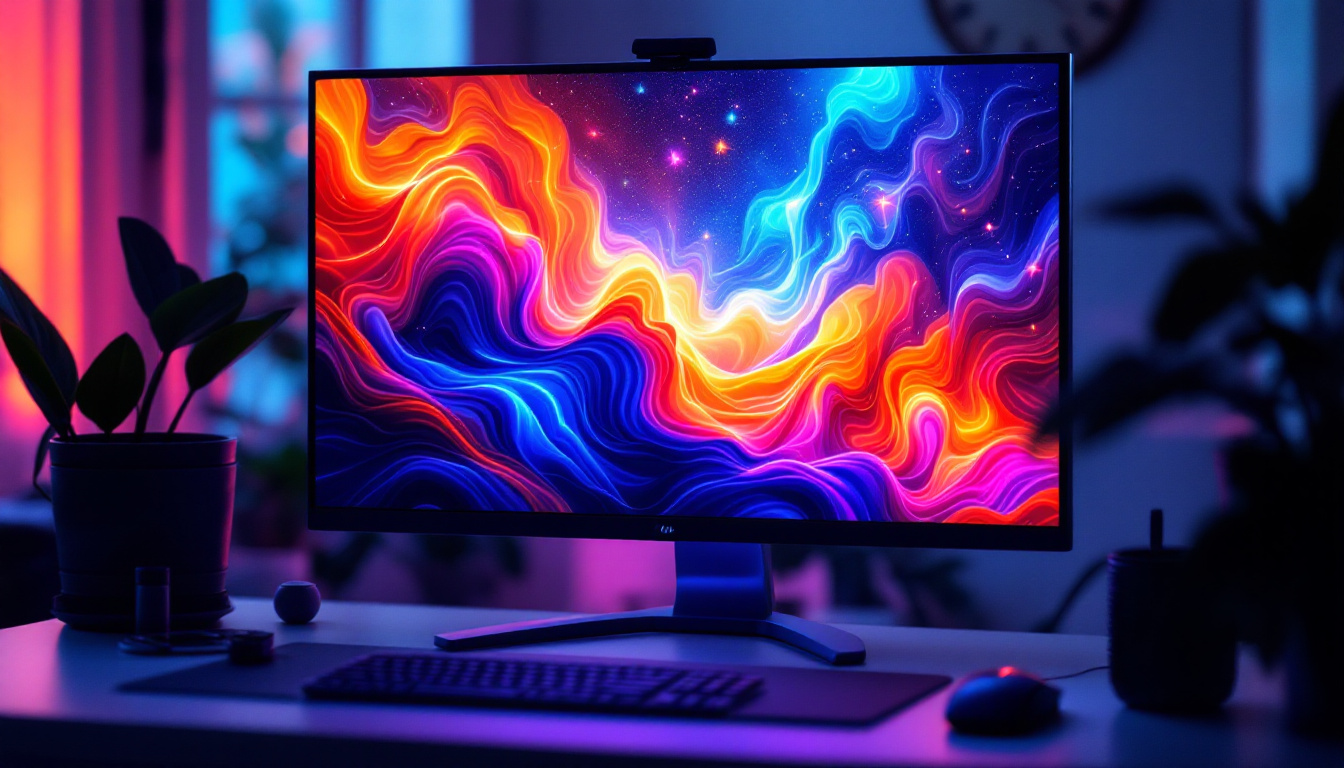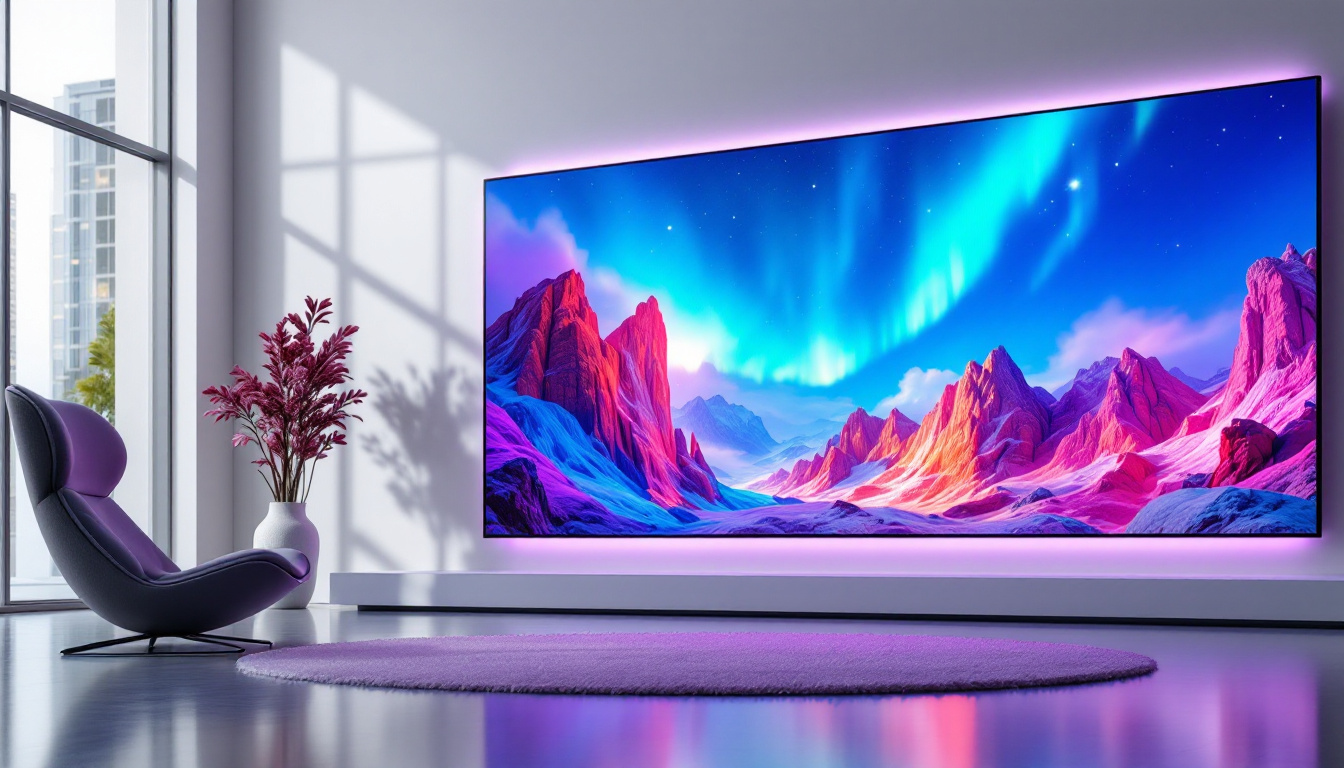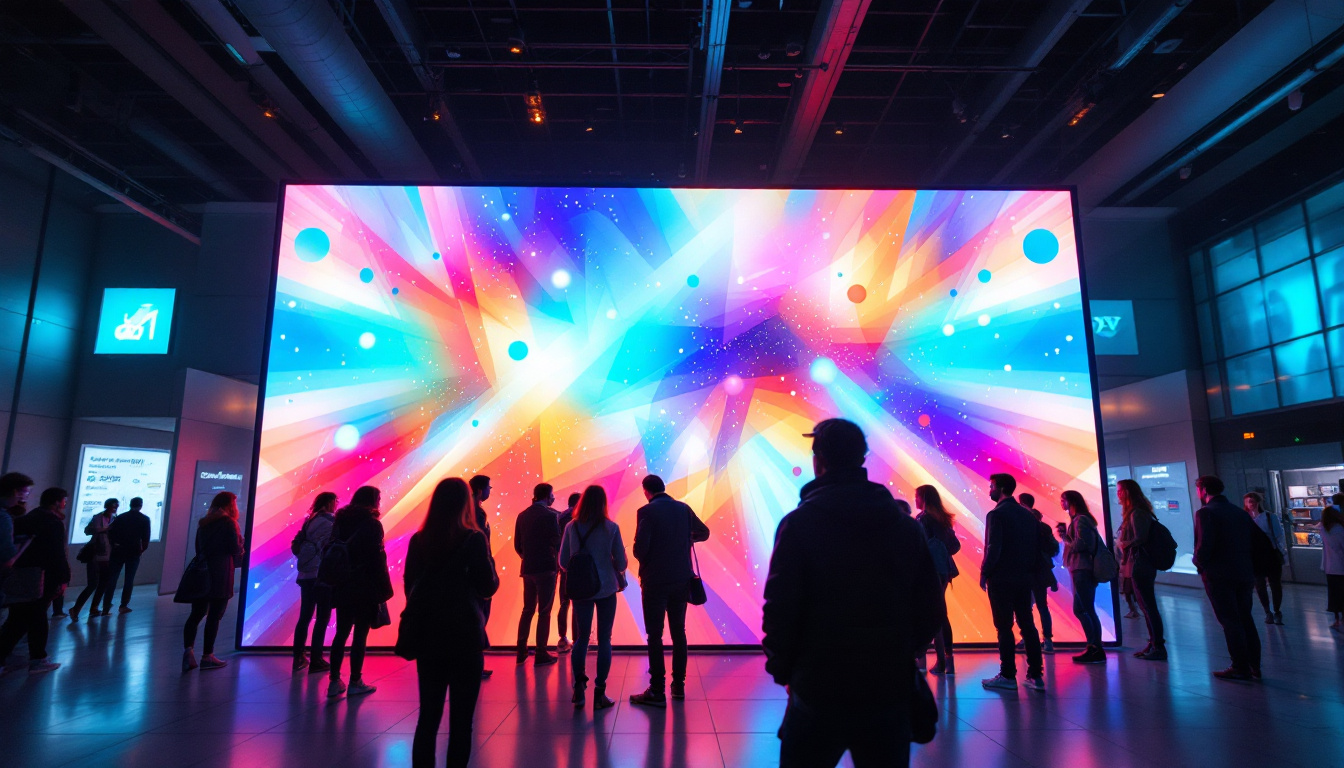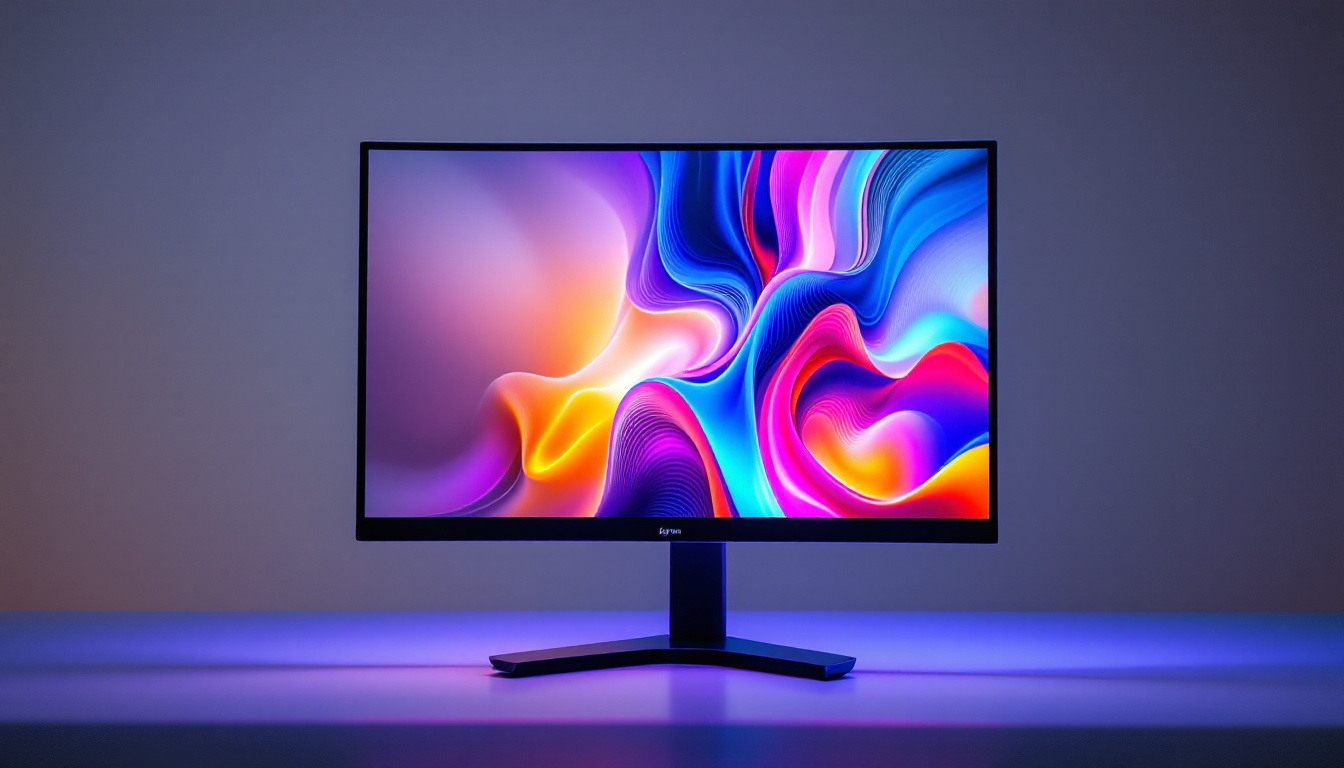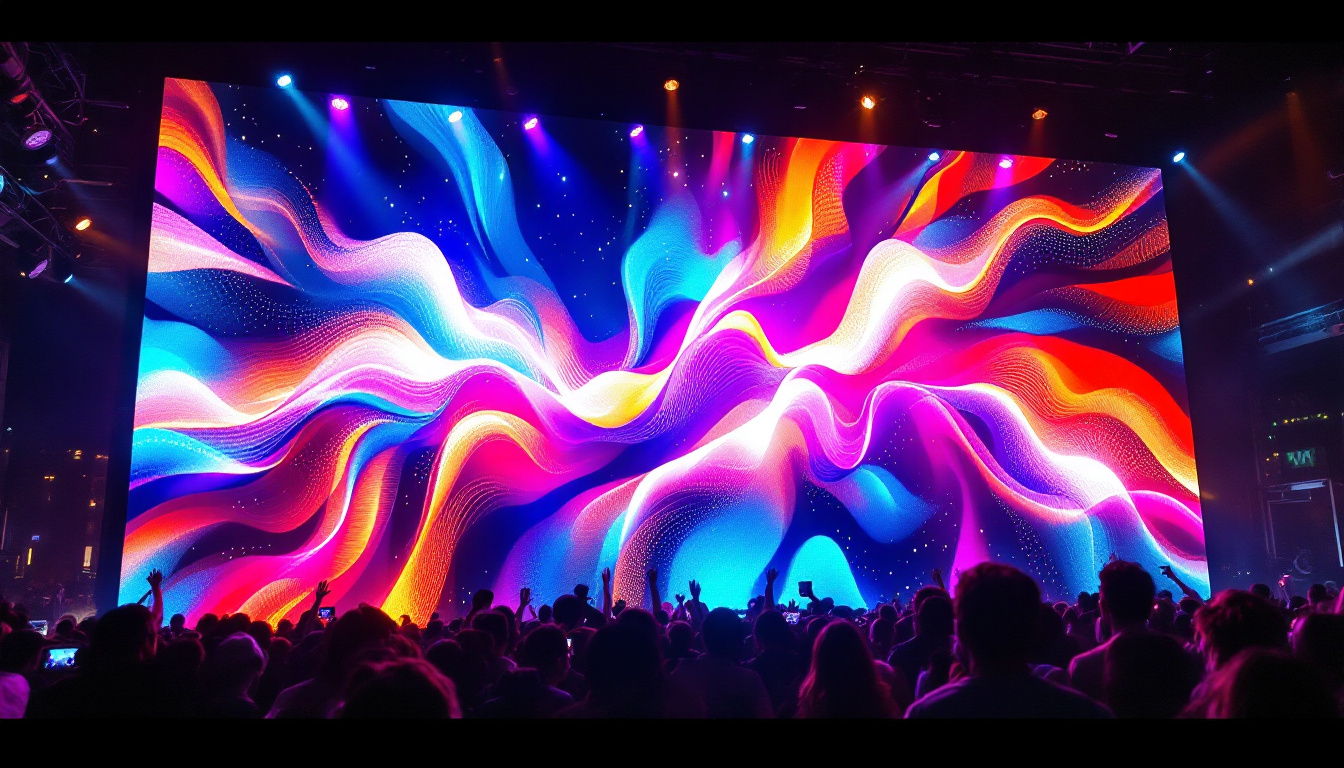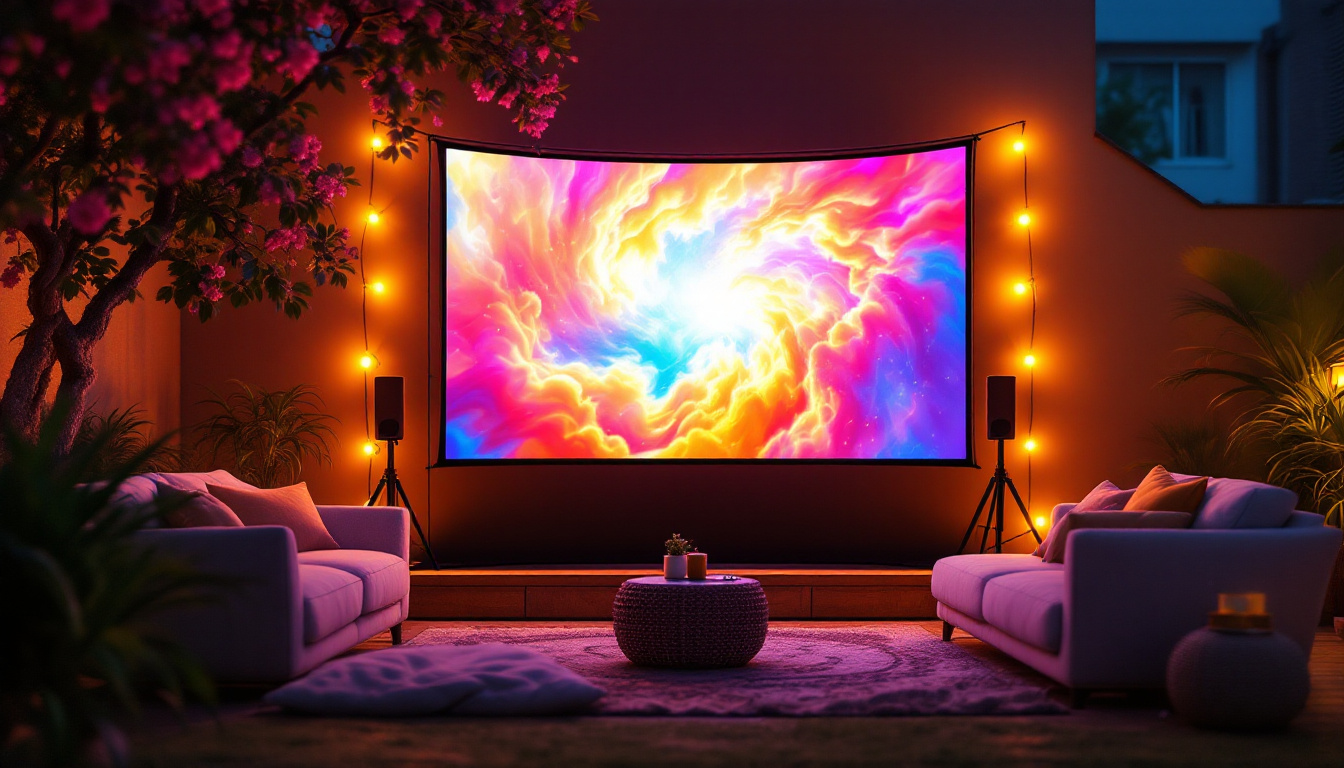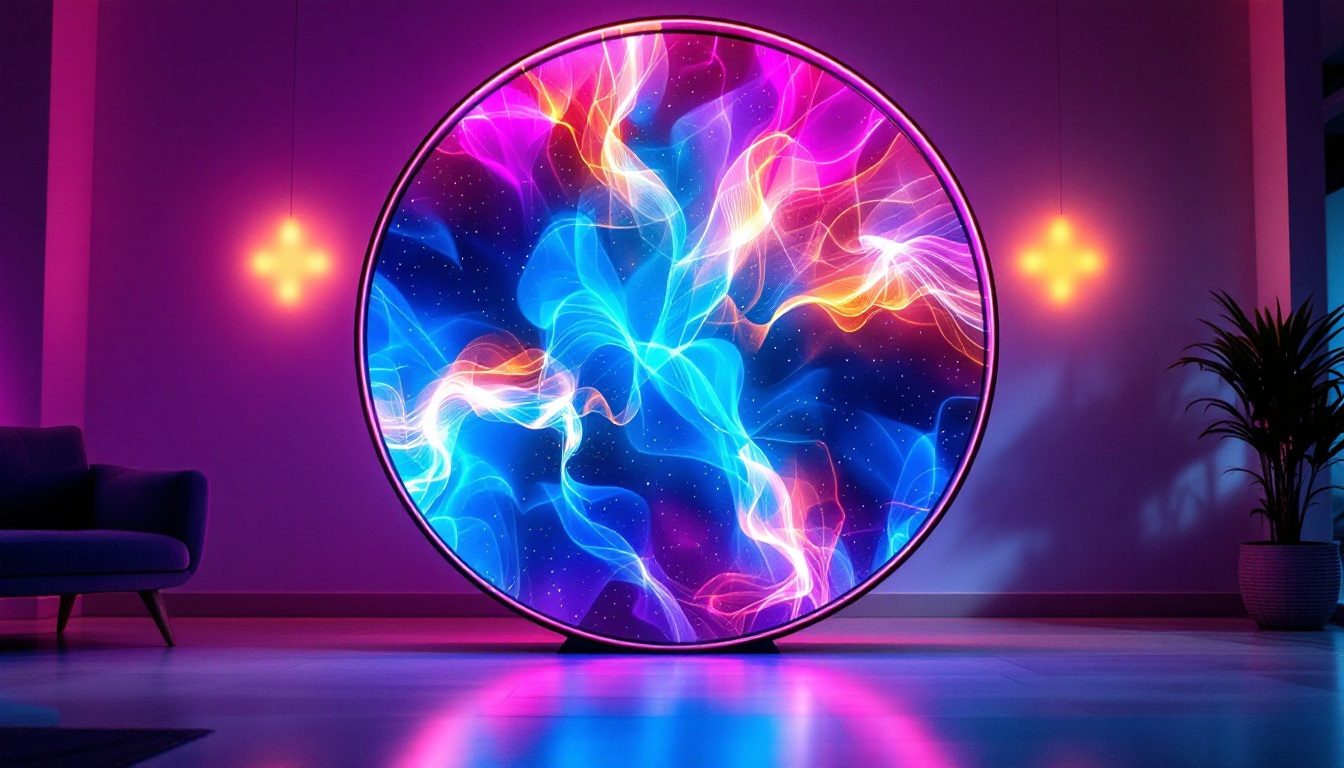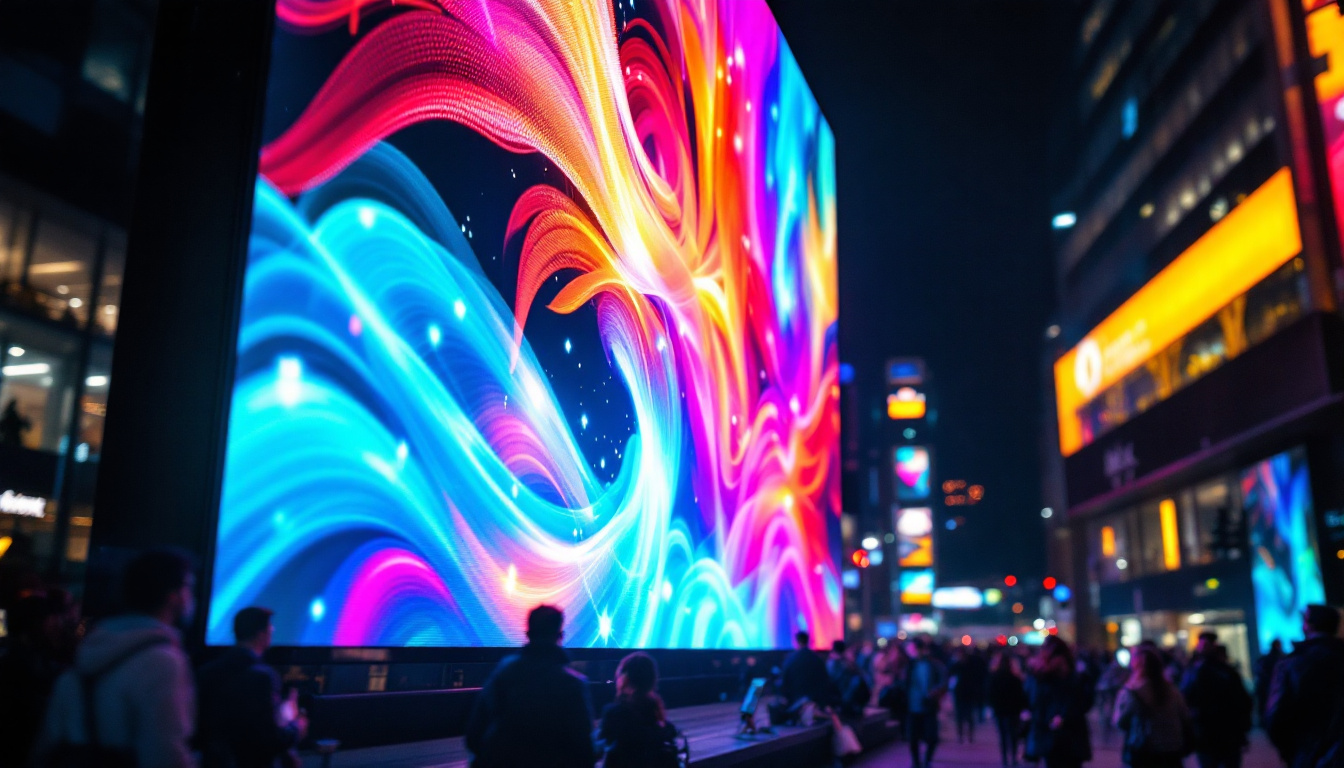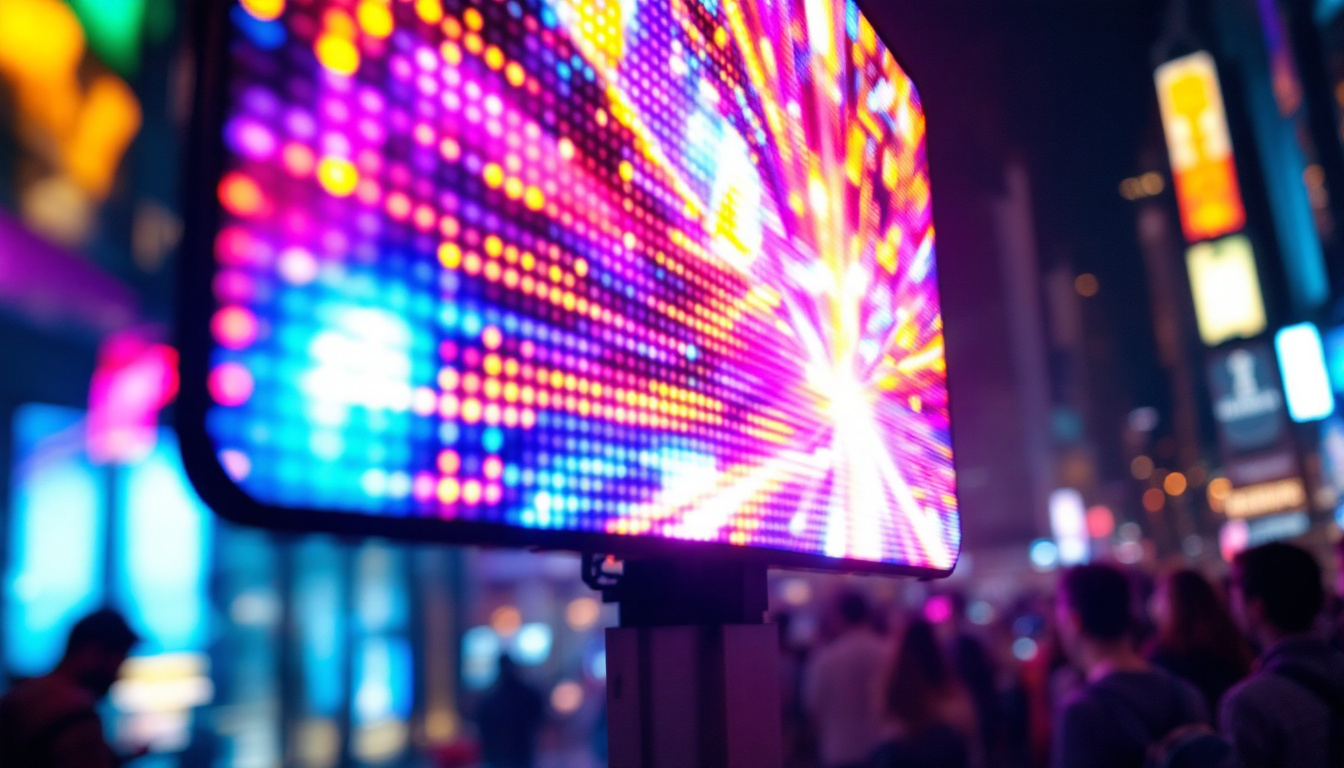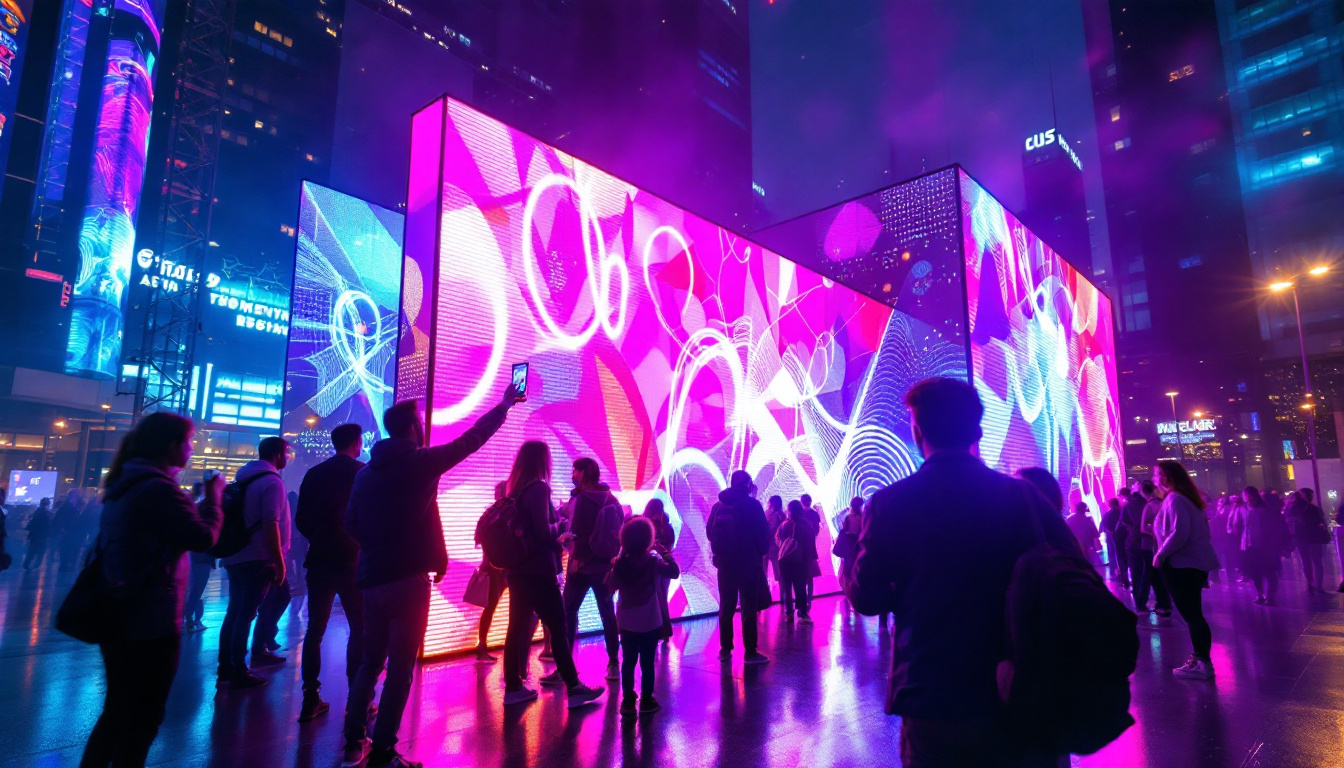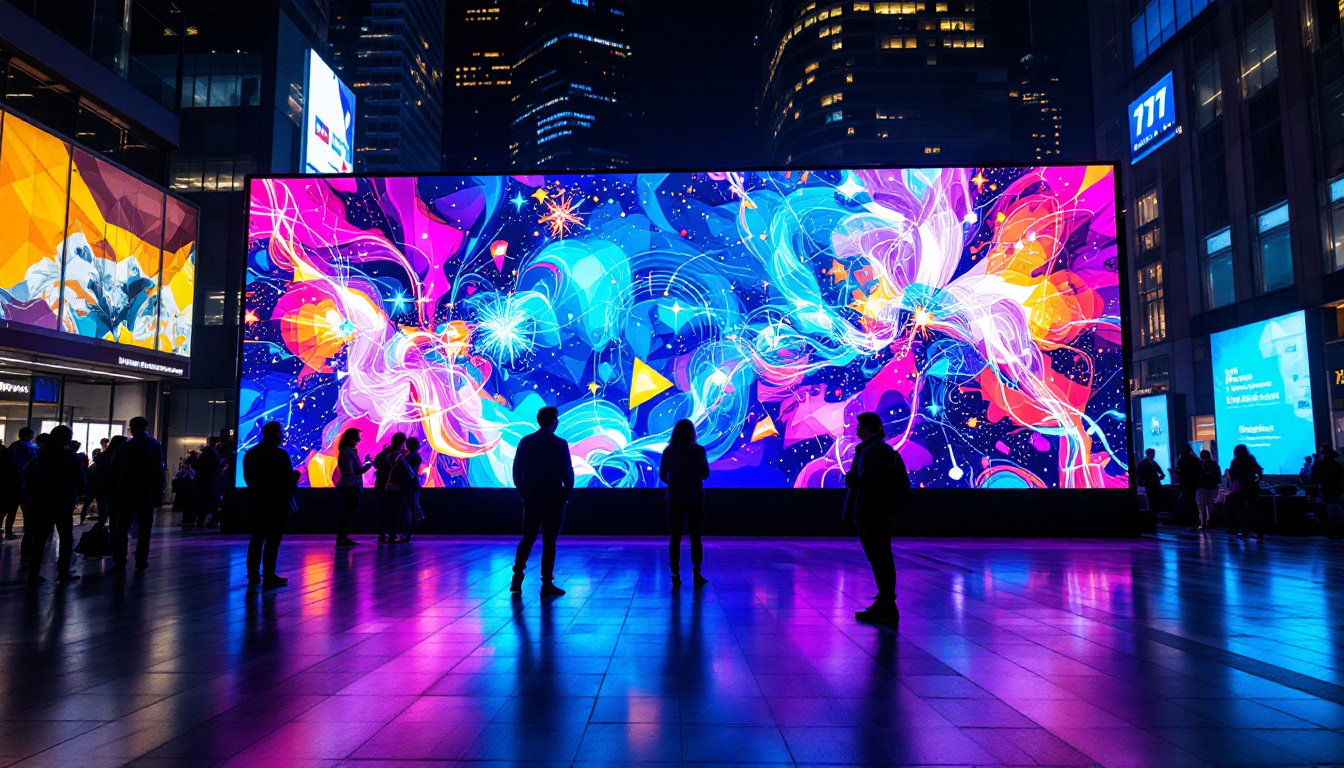Large LCD Display Screen: LED Display Explained
In today’s digital age, the demand for high-quality visual displays has surged, leading to the widespread adoption of large LCD screens, particularly those utilizing LED technology. Understanding how these displays work, their advantages, and their applications can help consumers and businesses make informed decisions. This article delves into the intricacies of large LCD display screens and the role of LED technology in enhancing visual experiences.
Understanding LCD Technology
Liquid Crystal Display (LCD) technology has revolutionized the way images are presented on screens. At its core, an LCD screen uses liquid crystals sandwiched between two layers of glass or plastic. The liquid crystals manipulate light to produce images, but they require a backlight to illuminate the display, which is where LED technology comes into play. This combination has led to thinner, lighter screens that consume less power compared to traditional cathode ray tube (CRT) displays, making them ideal for modern devices ranging from televisions to smartphones.
The Basics of LCD Operation
LCD screens operate by controlling the light that passes through the liquid crystals. When an electric current is applied, the crystals align in a way that either allows light to pass through or blocks it. This modulation of light creates the images seen on the screen. However, without a backlight, the display would be dark and unviewable. This is where LED (Light Emitting Diode) technology enhances the performance of LCD screens. LED backlighting can be implemented in various ways, including edge-lit and full-array configurations, each offering different benefits in terms of brightness, contrast, and energy efficiency. The advancement in LED technology has also allowed for features like local dimming, which improves the overall picture quality by adjusting the brightness of specific areas of the screen based on the content being displayed.
Types of LCD Displays
There are primarily two types of LCD displays: Twisted Nematic (TN) and In-Plane Switching (IPS). TN panels are known for their fast response times and are often used in gaming monitors. However, they typically have poorer color reproduction and viewing angles compared to IPS panels, which offer wider viewing angles and better color accuracy. Understanding these differences is crucial when selecting a large LCD display for specific applications. In addition to TN and IPS, there are also Vertical Alignment (VA) panels, which offer better contrast ratios and deeper blacks, making them a popular choice for home theater setups. Each type of panel has its own strengths and weaknesses, and the choice largely depends on the intended use, whether it’s for gaming, professional graphic design, or casual viewing.
LED Technology Explained
LED technology has become synonymous with modern display screens, including large LCDs. LEDs are semiconductor devices that emit light when an electric current passes through them. In the context of LCD screens, LEDs serve as the backlight, illuminating the liquid crystals to produce vibrant images. The evolution of LED technology has transformed the way we experience visual content, leading to sharper images and more dynamic color ranges that enhance everything from movies to video games.
How LED Backlighting Works
LED backlighting can be implemented in two main configurations: edge-lit and full-array. Edge-lit LED displays have LEDs positioned along the edges of the screen, which then diffuse light across the display. This design allows for thinner screens but may result in uneven brightness. In contrast, full-array LED displays have a grid of LEDs behind the entire screen, providing more uniform lighting and better contrast ratios. Full-array technology also enables local dimming, where specific areas of the screen can be dimmed or brightened independently, enhancing the depth of blacks and the overall viewing experience, particularly in dark scenes.
Benefits of LED Technology in LCD Displays
LED technology offers numerous advantages over traditional fluorescent backlighting. One of the most significant benefits is energy efficiency; LED displays consume less power, which is particularly beneficial for large screens that are often used for extended periods. Additionally, LED displays can achieve higher brightness levels and improved color accuracy, making them ideal for various environments, from conference rooms to outdoor settings. Furthermore, the longevity of LED lights means that they can last significantly longer than their fluorescent counterparts, reducing the need for frequent replacements and maintenance. This durability not only contributes to lower operational costs but also aligns with sustainability efforts, as fewer materials are consumed over time.
Moreover, the compact size of LEDs allows for innovative designs in display technology. Manufacturers are now able to create ultra-slim televisions and monitors that fit seamlessly into modern living spaces. The flexibility of LED technology also paves the way for creative applications, such as curved screens and even transparent displays, which are becoming increasingly popular in retail and advertising. As the technology continues to advance, we can expect even more exciting developments, such as enhanced smart features that integrate with home automation systems, further enriching the user experience.
Advantages of Large LCD Screens
Large LCD screens equipped with LED technology provide a host of benefits that cater to both consumers and businesses. These advantages extend beyond mere aesthetics, impacting functionality and usability.
Enhanced Visual Quality
One of the most notable advantages of large LCD screens is their ability to deliver stunning visual quality. With advancements in LED technology, these screens can produce deeper blacks, brighter whites, and a broader color gamut. This enhanced visual quality is particularly important for applications such as graphic design, video editing, and gaming, where color accuracy is paramount.
Versatility and Applications
Large LCD displays are incredibly versatile, finding applications in various fields. In the corporate world, they are commonly used for presentations, video conferencing, and digital signage. In the entertainment industry, large screens are essential for delivering immersive experiences in cinemas and theme parks. Furthermore, they are increasingly utilized in retail environments to attract customers and showcase products effectively.
Space Efficiency
Large LCD screens are designed to be space-efficient, making them ideal for environments where real estate is at a premium. Unlike traditional projection systems, which require considerable space for projectors and screens, large LCD displays can be mounted on walls or used as standalone units. This flexibility allows businesses to optimize their space while still delivering high-quality visual content.
Challenges and Considerations
While large LCD screens with LED technology offer numerous benefits, they are not without challenges. Understanding these challenges is crucial for making informed decisions regarding their use.
Cost Implications
One of the primary considerations when investing in large LCD screens is cost. High-quality displays, particularly those with advanced LED backlighting, can be expensive. Businesses must weigh the initial investment against the potential return on investment, considering factors such as durability, maintenance, and energy savings over time.
Viewing Angles and Color Consistency
Another challenge associated with large LCD screens is the variability in viewing angles and color consistency. While IPS panels offer better viewing angles than TN panels, they can still experience color shifts when viewed from extreme angles. This issue can be particularly problematic in large venues where audiences may be seated at various angles to the screen.
Screen Burn-In and Lifespan
Screen burn-in is a phenomenon that can occur with LCD displays, particularly those displaying static images for extended periods. While modern LCDs are less susceptible to burn-in than older technologies, it remains a consideration for businesses that use displays for digital signage or other static content. Additionally, the lifespan of LED backlights can vary, and users should be aware of the potential need for replacement over time.
Future Trends in Large LCD Displays
The landscape of large LCD displays is continually evolving, driven by advancements in technology and changing consumer preferences. Several trends are shaping the future of these displays.
Integration with Smart Technology
As smart technology becomes increasingly prevalent, large LCD displays are being integrated with smart features. This includes the ability to connect to the internet, stream content, and interact with other smart devices. Such integration enhances the functionality of displays, making them more versatile and user-friendly.
Higher Resolutions and Refresh Rates
The demand for higher resolutions, such as 4K and even 8K, is on the rise. Consumers and businesses alike are seeking displays that can deliver ultra-high-definition content with exceptional clarity. Coupled with higher refresh rates, these advancements are particularly beneficial for gaming and fast-paced video content, providing smoother visuals and an enhanced viewing experience.
Environmental Considerations
As sustainability becomes a priority for many consumers and businesses, manufacturers are focusing on creating eco-friendly displays. This includes using recyclable materials, reducing energy consumption, and implementing sustainable manufacturing practices. The push for greener technology is likely to influence the design and production of large LCD displays in the coming years.
Conclusion
Large LCD display screens utilizing LED technology have transformed the way visual content is presented across various industries. Their advantages, including enhanced visual quality, versatility, and space efficiency, make them an attractive option for both consumers and businesses. However, potential challenges such as cost implications and viewing angle limitations must be considered when selecting a display.
As technology continues to advance, the future of large LCD displays looks promising, with trends pointing towards smarter, higher-resolution, and more environmentally friendly options. By understanding the intricacies of large LCD screens and LED technology, stakeholders can make informed decisions that align with their needs and objectives.
Discover LumenMatrix’s Innovative LED Display Solutions
Ready to elevate your visual experience with the latest in LED display technology? Look no further than LumenMatrix, a pioneer in crafting immersive and dynamic LED displays for a multitude of applications. From vibrant Indoor and Outdoor LED Wall Displays to versatile Vehicle and Sports LED Displays, and even groundbreaking Transparent LED Displays, LumenMatrix offers tailored solutions that promise to revolutionize your visual communication. Embrace the future of digital signage with LumenMatrix’s cutting-edge solutions that guarantee to engage and captivate your audience. Check out LumenMatrix LED Display Solutions today and transform your space with unparalleled clarity and impact.


